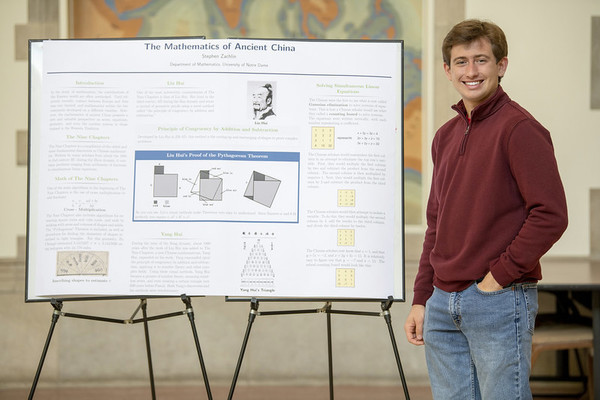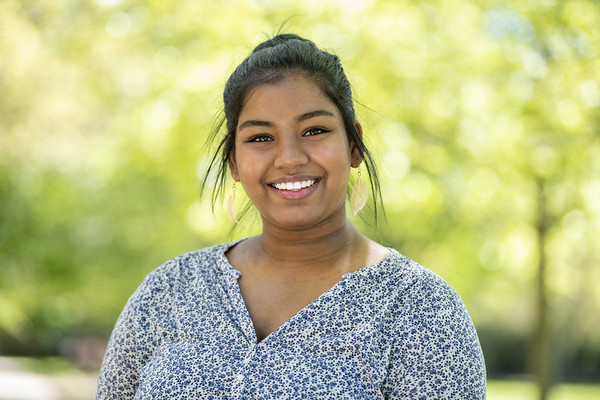Mathematics is often taught in a non-historical way: Formulas are given as facts, especially during the early years. Most students don’t know or weren’t taught who derived them, or how they were discovered.
Brian Mulholland, assistant professor of the practice in the Department of Mathematics, remembers a class he took as an undergraduate on the history of mathematics, and decided to create a similar experience for Notre Dame students during the 2021 winter session. The 25 students in Introduction to Mathematical Writing and History learned about the history of mathematics worldwide.
“I wanted to connect our study of mathematics to writing and history,” he said. “Students can take a writing course, but generally writing classes don’t teach you how to use mathematical formulas in a sentence, and I thought this would be a great way to bridge a gap by using technical language to talk about mathematics in not just a problem-solving way, but in a narrative writing way.”
Mulholland also noticed that many of the posters hanging in Hurley Hall were about a decade old, and decided that the winter session course could become the avenue for updating the posters. He structured the class to be offered for either two or three credit hours: Students who decided to earn three credits were required to complete a research project that culminated in a poster presentation.
Freshman Stephen Zachlin, a rising sophomore majoring in applied computational and mathematics and statistics (ACMS) as well as economics, took the course to potentially fulfill a writing requirement, but also because he thought the class would be fun. His poster centered on ancient Chinese mathematics, including Pascal’s Triangle, which was developed in China during the 11th century.

“It’s fascinating because they were doing Gaussian elimination 1,000 years before we were,” Zachlin said.
In addition to talking about the history of different mathematical techniques, the course gave Mulholland the chance to delve into discussions about underrepresented populations who contributed to the field. These included not only the movie-popularized “Hidden Figures” — three Black mathematicians, Mary Jackson, Katherine Johnson and Dorothy Vaughan, who worked for NASA during the 1960s — but lesser-known mathematicians.
For instance, Sophie Germain was a French mathematician who initially wrote under a male pseudonym to hide her identity; Srinivasa Ramanujan, an Indian mathematician born in the late 1800s, made pioneering contributions to number theory, and David Blackwell was the first Black scientist to be inducted into the National Academy of Sciences.
A poster created by Kara Kramer, a rising senior, now hangs in Hurley Hall and features Maria Agnesi, a mathematician and theologian who was recognized as blessed by Pope Benedict XIV in the 1700s.
Ghislain Trindade ‘21 did not complete a poster but said she enjoyed the depth of discussion with her classmates. Mulholland would divide each class into two parts where he would teach the history and concepts and then ask the students to get together to calculate mathematics problems in ways that the people of different time periods would have solved them.

“It was so fascinating, and the class really makes you appreciate mathematics,” she said.
The winter session was a great opportunity for Mulholland to teach something unique and gauge student interest in important topics, he said.
“This experience has taught me that students want an interdisciplinary view of mathematics and my hope is to offer a course like this in the future as an elective,” Mulholland said.